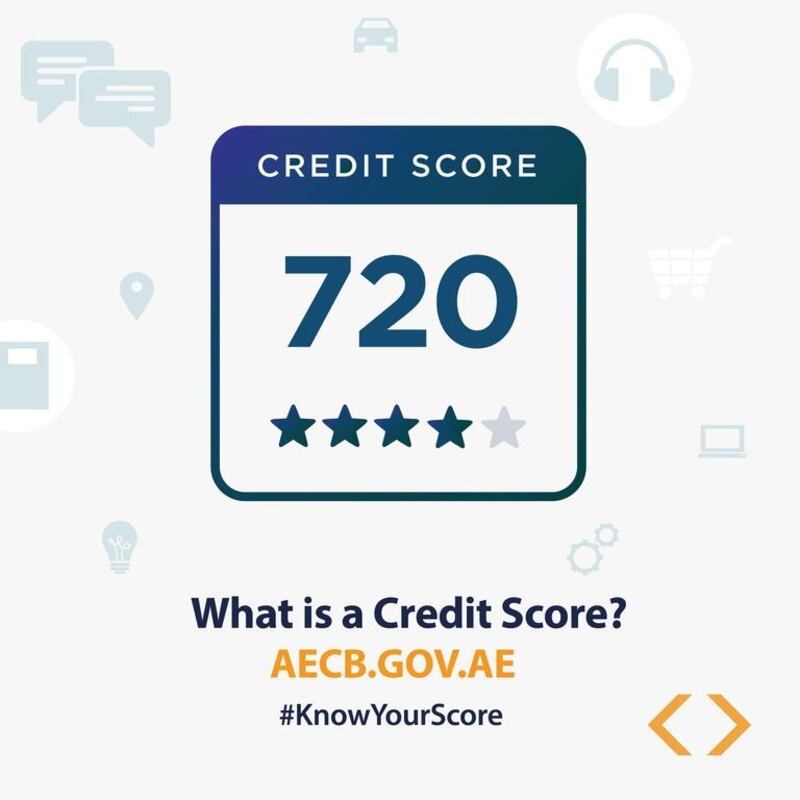You can now access your credit score in the UAE after the Al Etihad Credit Bureau (AECB) launched the system in the Emirates today. But what does it mean? And why would you want to? Here we guide you through the process:
What is a credit score?
A credit score is a number which represents your credit worthiness – in other words, your risk of defaulting on your credit card repayments and loans. In the UAE, the number is between 300 and 900. The higher it is, the better.
How does it affect me?
In many ways. Credit scores are used first and foremost by banks assessing credit applications. But experts, including the AECB, stress that the number is not read in isolation. In fact, Marwan Ahmad Lutfi, the chief executive of AECB, said a high score or a low score does not mean anything. The final decision depends on a bank’s appetite for risk. Some are cautious and prefer borrowers with a clean record, while others are inclined to extend credit to people who have a patchier payment history. In more mature markets, a good credit score has typically led to borrowers receiving lower interest rates. The Al Etihad Credit Bureau hopes the same thing will happen here. Overseas, employers often also use them to assess applications, as a good borrower is often believed to make a good employee. And credit scores are used by other companies, such as insurers, and telecommunication and utilities companies, too. In more mature markets, where credit bureaus have evolved over time, health insurance premiums tend to rise when people miss payments, as they are presumed to be under more stress.
How do I know if my score is low or high?
By checking it. You can do this by visiting Al Etihad Credit Bureau’s customer service centres and providing your valid Emirates ID, passport copy and valid email address.
Why is it important?
Because banks, companies and even future employers will use it to judge you.
Will it stop me borrowing?
It might, but it will not be the only factor banks use to assess credit applications.
What does it mean if my score is high?
Lucky you. It means you have a good credit history and should have no problems getting a loan or credit card, if you want one. It’s only a problem if it is low. Then you have work to do to improve it. The worst score you can have is 300. The best is 900. Many other credit bureaus and companies internationally use the same range.
How much does it cost to find out what my score is?
A standard credit report for individuals or establishments costs Dh100, while the document with a score is an additional Dh50. A credit score only, with no report, for an individual costs Dh60. Standard reports for corporates cost Dh180, or with a score for Dh220.
How is the score calculated?
According to the AECB, the score is calculated using 2,000 different factors including nationality, age, outstanding balances and the number of loans.
What can I do to improve my score?
Pay your bills on time, but loan instalments or credit card repayments are not the only payments you have to keep in mind. Your score is calculated using information collated from various sources such as banks, finance and telecoms companies, so you should make sure you settle all your debts by the due date.
How does it compare to other credit scoring systems around the world?
It is similar, as the score range of between 300 and 900, like many other credit companies internationally, but it is likely that the algorithm that is used to calculate the score has been tailored to the UAE as the demographics are different to some markets like the United Kingdom or United States.
Where can I find out more information about the credit scoring system?
The Credit Bureau has a section on its website dedicated to the new system so log onto: www.aecb.gov.ae
pf@thenational.ae
Follow The National's Business section on Twitter







